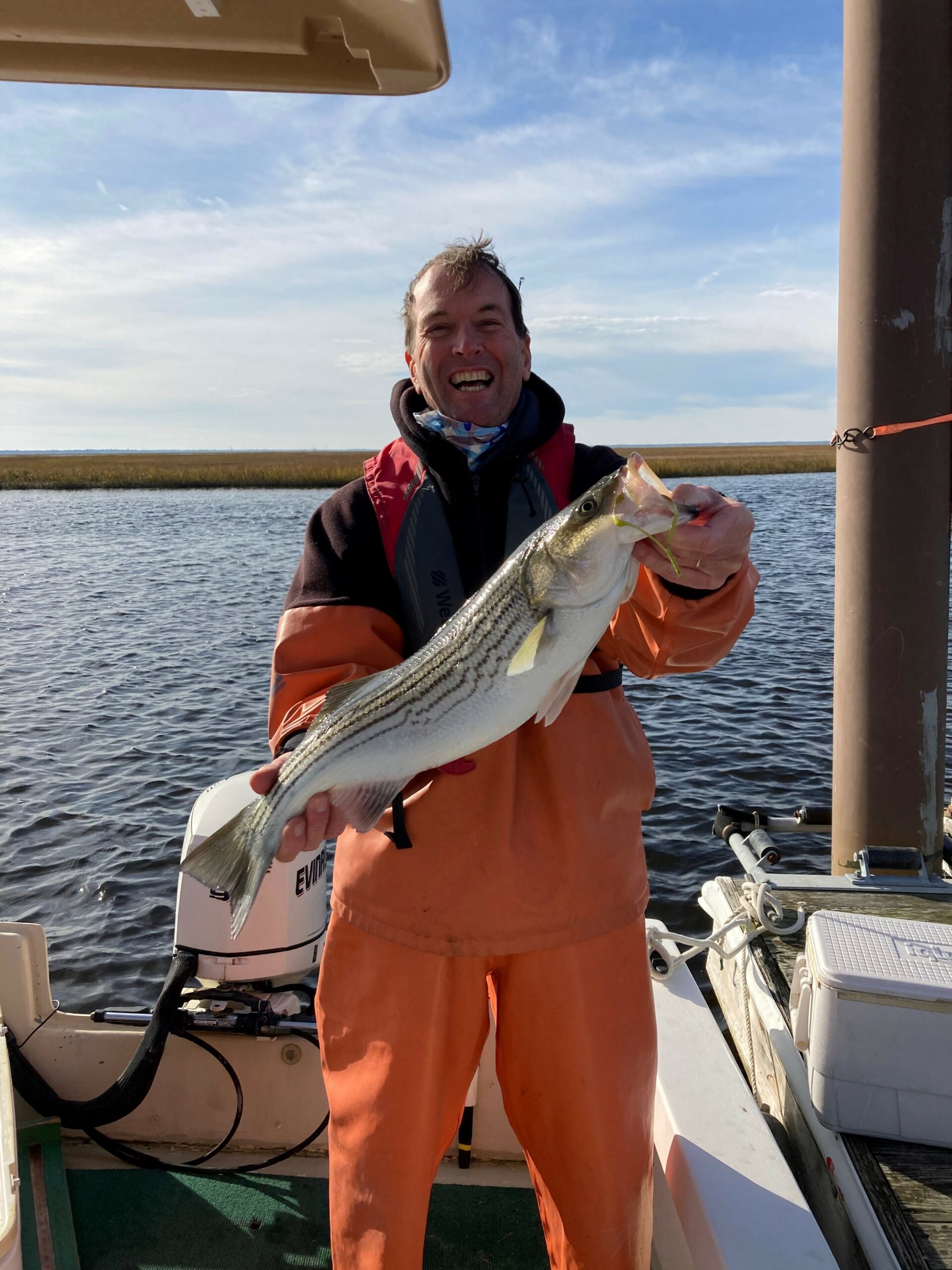Morone saxatilis



Conservation
Striped bass is one of New Jersey’s most sought after recreational fish species. NJ’s recreational striped bass harvest (by numbers of fish) is typically one of the highest harvests by state coastwide in the ocean fishery. A combination of size/bag limits, seasons, and gear restrictions are in place to manage NJ’s recreational striped bass fishery. Since this species is of great importance, NJ banned the netting and sale of striped bass and reallocated the commercial quota to the recreational sector to form the Striped Bass Bonus Program (SBBP) in 1990. The SBBP is a popular program and provides valuable data for assessing stock status and fishing trends, making it an integral part of New Jersey’s striped bass management.
The stock status of striped bass is currently assessed on a coastwide basis and managed under Amendment 7 to the Interstate Fishery Management Plan (FMP). The latest benchmark stock assessment (2018) indicated the stock is overfished and experiencing overfishing. Addendum VI to Amendment 6 was implemented in 2020 to end overfishing by reducing the bag & size limit to 1 fish at 28” to less than 38” and requiring the use of circle hooks when fishing with bait to reduce release mortality. In addition, Amendment 7 was approved in 2022 which included additional measures to strengthen and support stock rebuilding. The next stock assessment update is expected to be finalized in October 2022.
The New Jersey DEP Fish & Wildlife’s (NJFW) commitment to protect and conserve the striped bass population is evident by the numerous surveys/projects conducted by NJFW staff to collect data on striped bass:
- Striped Bass Tagging Survey: Uses gillnets to catch, tag, and collect biological data of striped bass in the Delaware Bay as part of the U.S. Fish & Wildlife Service’s (USFWS) Cooperative Striped Bass Tagging Program
- Delaware River Seine Survey: Provides an annual index of striped bass juvenile (young-of-year) abundance
- NJ Ocean Trawl Survey: Collects biological data of striped bass and provides an annual index of abundance
- Tournament & Party/Charter Boat Sampling: Collects biological data from striped bass to supplement data obtained from other NJFW surveys
- SBBP: Provides catch & effort data from individual anglers and party/charter boat logbooks
- Additional biological data is collected opportunistically from various surveys such as NJFW’s Raritan Bay Inventory Survey and River Herring Survey
Annual indices of abundance and biological data, such as those collected from NJ’s striped bass surveys, are crucial information needed to assess stock status. Sound assessments provide biologists and managers with better management tools in order to protect the species for years to come.
More information about this species can be found below:
Description
- silvery body
- 7-8 horizontal black stripes on sides of fish
- 2 dorsal fins
- small teeth on tongue
- large mouth
- jaws extend backward to below the eye
- 2 prominent spines on gill covers
Size
- up to 72 inches and 125 lbs (rarely over 50 lbs.)
Range
- St. Lawrence River, Canada to St. John’s River, Florida
Facts
- Anadromous – spends most of adult life in oceanic or estuarine waters but migrates into freshwater rivers and tributaries to spawn
- believed to live up to 30 years
- important food and game fish
- introduced to the Pacific coast of North America and many large reservoir impoundments in the US as a means to control gizzard shad populations and for recreational fishing
- feed most actively at dusk until dawn
 Official Site of The State of New Jersey
Official Site of The State of New Jersey

